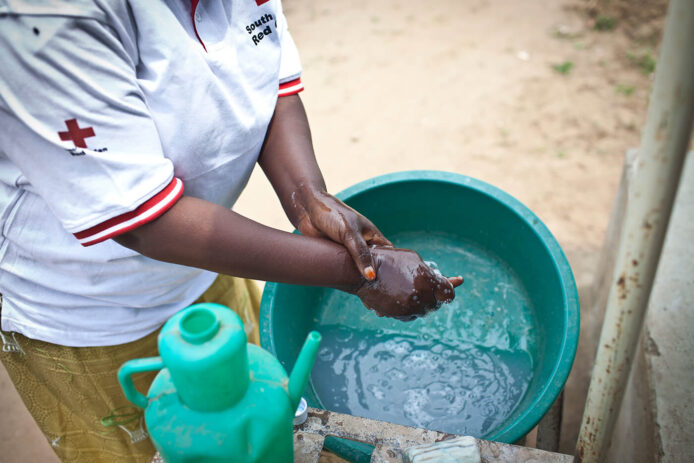Diseases spread when water, sanitation and hygiene (WASH) systems fail. When people drink dirty water or eat food contaminated by poor sanitation, or don’t wash their hands, they can get sick from bacteria, viruses, and parasites. Other disesases spread because people cannot wash properly due to lack of clean water. Diseases spread by mosquitos and other vectors such as rats rely on water or waste to breed or spread.
WASH is a fundamental part of public health; and closely integrated with community health and first aid (CBHFA) and community epidemic and pandemic preparedness programs (CP3) to reduce the burden of WASH-related diseases.

Common WASH-related diseases include diarrhea, cholera, typhoid, hepatitis A and E. Polio is also spread via the faecal-oral route.
The F-diagram is a common tool to show how germs travel from feces to people through “F” pathways: fluids (water), fields (soil), flies, fingers, food, and floors (surfaces).
Good WASH practices break these pathways by providing clean water, safe toilets, handwashing with soap, and proper waste treatment and disposal.
Managing epidemics, or preferably preventing them, is a priority for the International Red Cross and Red Crescent Movement. The role of communities in preventing, detecting and responding to local health threats is critical in improving the lives of millions across the world.
The Epidemic Control Toolkit provides guidance on evidence-based methods to prevent and control the spread of epidemics at the community-level, and guidance on appropriate referral and basic care for the sick.
The Toolkit is available in English, French, Spanish, Arabic and Russian and can also be downloaded as an offline app to your mobile phone.
“According to WHO, 50% of undernutrition is associated with infections caused by poor water, sanitation or hygiene.”
The three main underlying causes of undernutrition are unsuitable or insufficient food intake, poor care practices and disease – these are directly or indirectly related to inadequate access to water, sanitation and hygiene. Stunting, a main indicator for malnutrition – when a child is too short for their height – is also an indicator for repeated exposure to infection or other illnesses throughout the early years of life.
WASH programmes are often implemented in a large scale and therefore, can serve as a key delivery platform for enhancing the coverage and effectiveness of nutrition interventions.
Find out more here, or see the key external resources below
Nyss - a community-based surveillance platform for epidemic-prone diseases
One Health in action - Community Epidemic and Pandemic Preparedness Programme
Community level Cholera preparedness
Sign up to receive updates from the IFRC WASH unit here, or contact us for more information